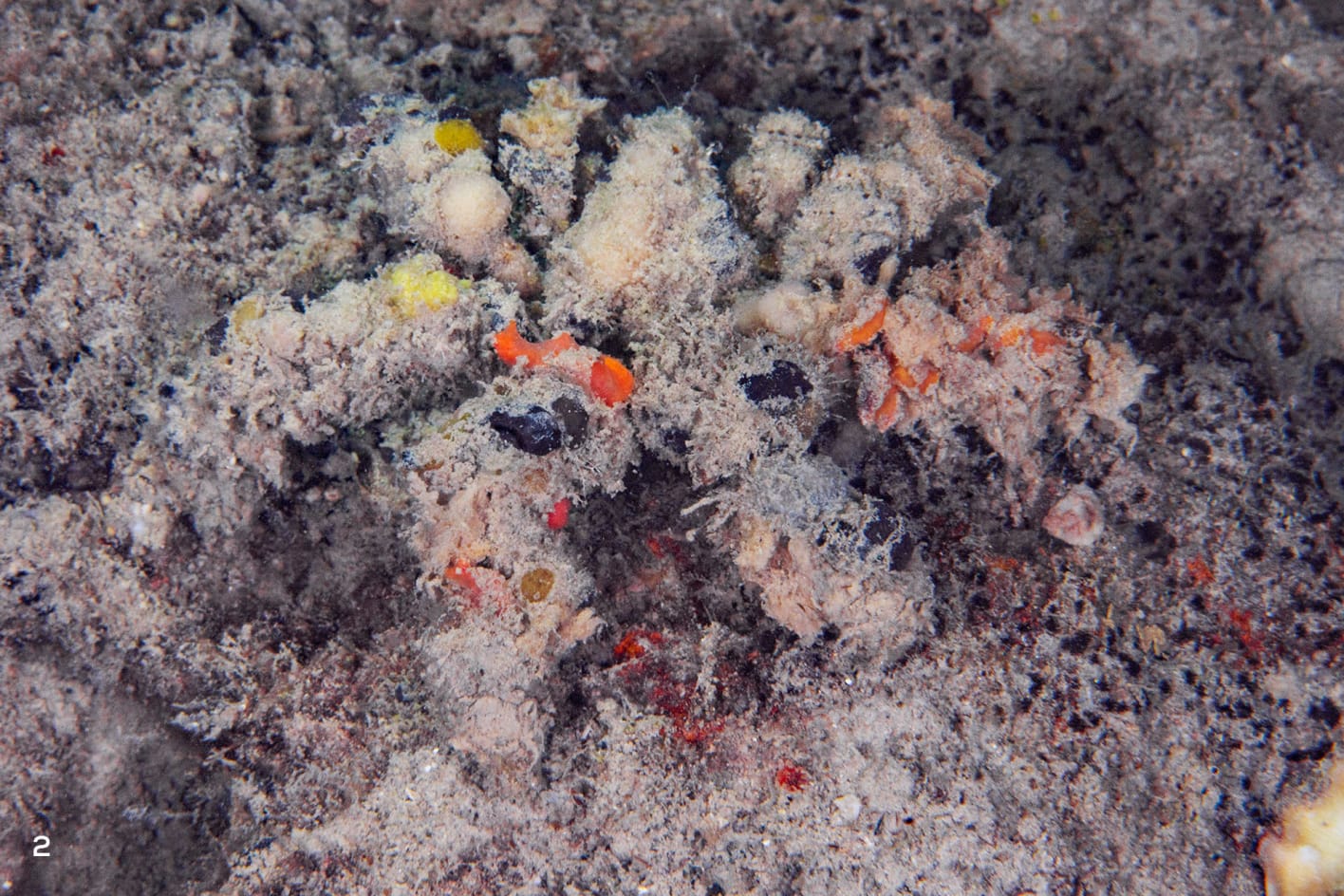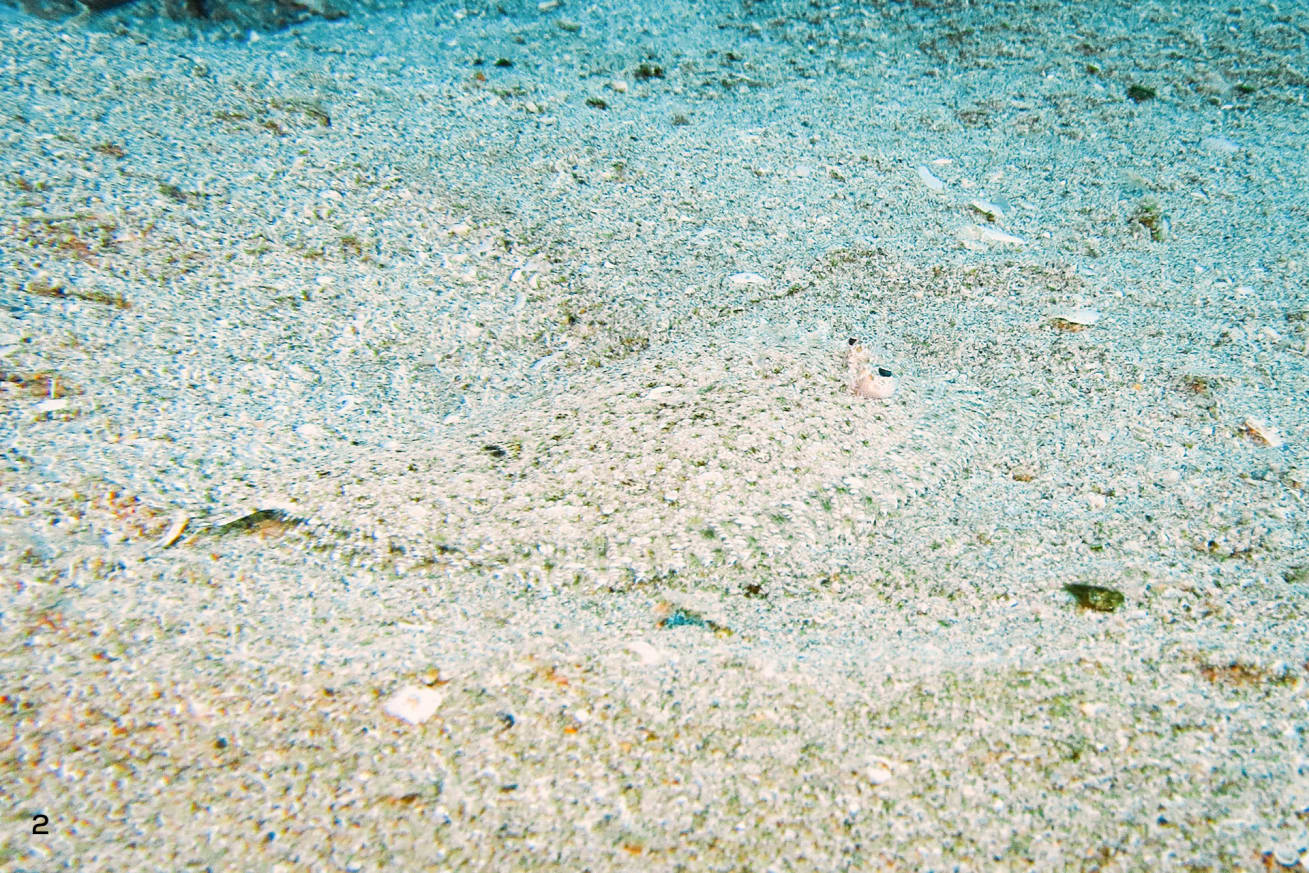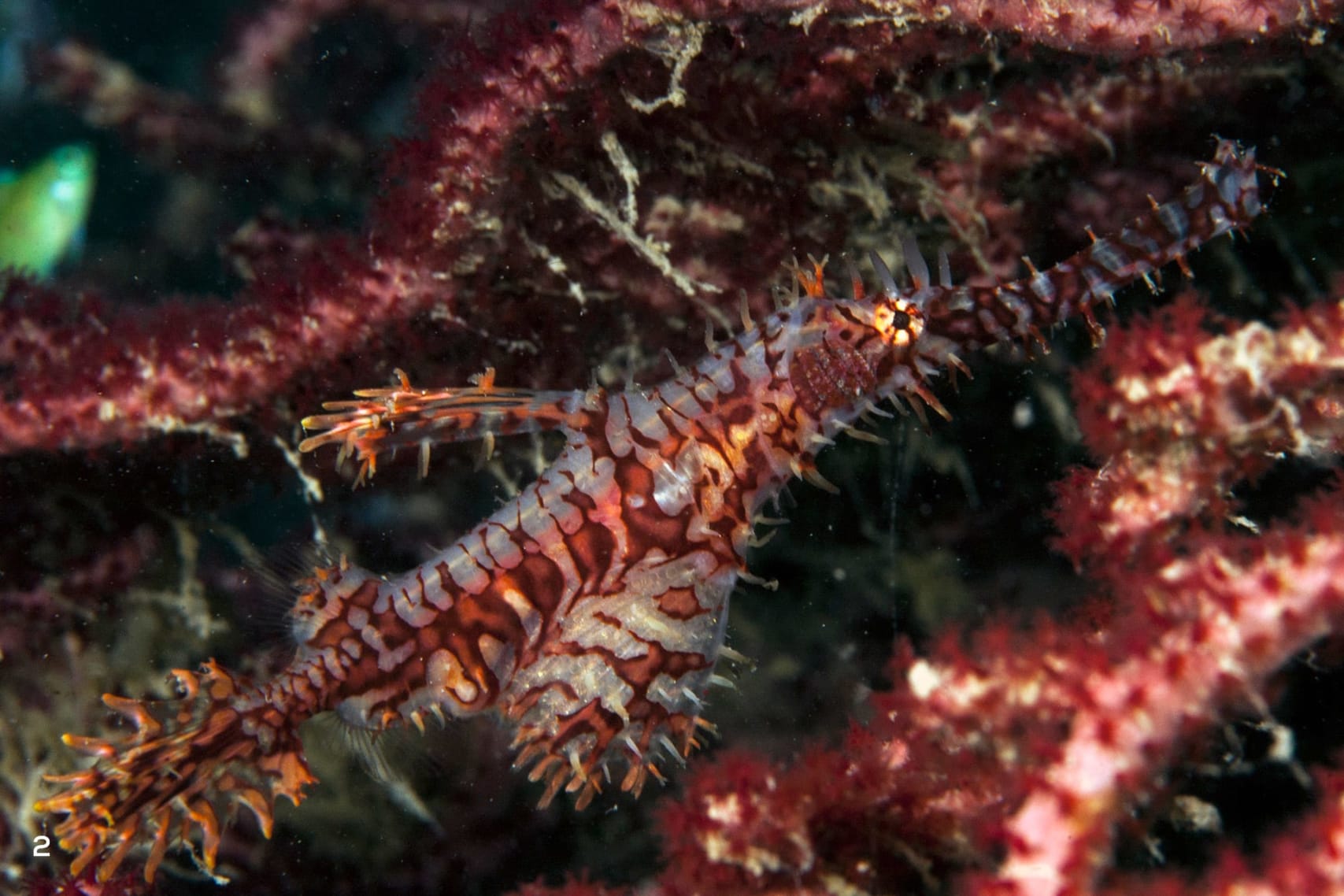 Listen to this article
•
15:34 min
Listen to this article
•
15:34 min
Marine environments can be very dynamic, harsh and dramatic! Different species fight for resources, space, and their lives, underscoring “Survival of the Fittest” in bright colours. This environment throws up some spectacular examples of adaptations that organisms have evolved to survive — and camouflage is one that is well worth uncovering.
Crypsis is the ability of an animal to disguise or hide itself by taking on a colour, texture, or shape to blend with their surroundings. Derived from the Greek word “kryptos” (meaning hidden), crypsis, in most cases, is an innate ability animals have, but some enterprising species also use whatever tools the environment offers them.
Crypsis encompasses several mechanisms, including camouflage, transparency, nocturnal behaviour, mimesis, and good old hiding. Transparency is a common characteristic of many pelagic organisms ranging from plankton and larvae to larger jellyfish and salps. Blending in is their best option in the open ocean where there are no available hiding spots, and in shallow, well-lit waters where light can easily expose them.
Some animals use cryptic colouration or classic camouflage — colours or patterns on their bodies that make blending in with their surroundings easy. Others manipulate this further to change their appearance rapidly to exhibit active camouflage. Self-decoration is yet another fascinating mechanism whereby animals pick up objects or other organisms from their environment and attach them to their bodies for camouflage. Some animals also exhibit mimesis, imitating an object (like seaweed) to hide in plain sight. This is different from mimicry, which is the imitation of a living organism for defence, warning, or to lure prey.
Crypsis serves several purposes, the most obvious one being concealment from predators, but it is also a mechanism for predators to sneak up on prey undetected. It is worth noting that most organisms use more than one mechanism to achieve crypsis, because — why keep it simple?
Transparency: Have you ever been stung while enjoying a swim in the sea and been unable to spot the invisible culprits? If so, you have probably had a formal introduction to some jellyfish (not all sting). Several marine organisms like this (1) comb jelly (Mnemiopsis sp.) and (2) moon jellyfish (Aurelia aurita) are transparent or at least highly translucent. Jellyfish or sea jellies (they are not fish) are made up of nearly 95 per cent water and a clear, gelatinous (jelly-like) substance called mesoglea. This transparency gives these organisms near-perfect invisibility, but even that does not guarantee protection as some fish have super-vision that can spot the slightest flaw in their transparency. Photos: Vardhan Patankar (1), Dhritiman Mukherjee (2)
Cover photo: Umeed Mistry
Fish like this (1) crocodilefish (Cymbacephalus beauforti) are also great at blending in. Its body is covered in a rich mosaic pattern with lines and patches in between. It is perfectly equipped for camouflage against sandy/rocky bottoms or coral rubble, where the substrate itself is broken up visually by different elements. Adding flair to their camouflage is the presence of beautiful (2) iris lappets (lace-like hanging extensions) covering their black eyes to complete the camouflage. Photos: Dhritiman Mukherjee
Self-decoration: (1) Using their tube feet, sea urchins pick up debris to put on top of themselves, much like a hat and glasses, to change their appearance. They will use anything they find — shells, seaweed, the occasional bewildered sea anemone, and sadly, even plastic pieces like bottle caps — to hide from predators to compensate for their lack of speed. These decorations also help them remain inconspicuous, add protection against intense light and UV rays, and protect them from drying out when exposed in the intertidal zone. Similarly, (2) decorator crabs like this one, as their name suggests, are known to adorn themselves with similar living and inanimate pieces to camouflage themselves.
Some hermit crabs have hydroids or sponges growing on their shells — live decorations that taste nasty or sting — keeping predators at bay while concealing the crab. Interestingly, most of these instances are also examples of mutualism wherein both organisms stand to benefit. Photos: Umeed Mistry (1), Dhritiman Mukherjee (2)

Active camouflage is usually a rapid change in appearance and can be reversed equally fast. While primarily observed as a camouflage technique, animals also use it for signalling. Bottom dwellers like flounders and cephalopods like this (1) cuttlefish (Sepia sp.) and squids are great at playing peekaboo. The best example of this is a (2) day octopus (Octopus cyanea) that can change its appearance completely within seconds through a process called metachrosis. Metachrosis is the voluntary manipulation of pigment cells (chromatophores) in the skin to alter appearance. Some individuals even make small projections on their skin (papillae) stand up and appear like bumps or taller spikes. Photos: Vardhan Patankar (1), Umeed Mistry (2)
Most animals displaying active camouflage, like (1) flounders, also have another trick up their sleeve (or fins). (2) Leopard flounders (Bothus pantherinus) have cryptic patterns on their body that help them blend against mottled backgrounds like a sandy bottom. Like the octopus, they also show off their prowess by tweaking pigment cells in their skin to hide against any background. They rely on their sight and hormones to do this. It has been found that individuals with an injured eye will struggle to match the background. Photos: Umeed Mistry (1), Vardhan Patankar (2)
Mimesis: A form of mimicry, mimesis is when an animal evolves to resemble an inanimate but specific object in the environment to hide in plain sight. Classic examples of mimesis are fishes belonging to the seahorse and pipefish family (Syngnathidae). (1) Robust ghost pipefish (Solenostomus cyanopterus) looks like a random scrap of reddish-brown seaweed, while the (2) ornate ghost pipefish (Solenostomus paradoxurus) looks like a more festive version of a random seaweed, hiding well among similar-looking corals and feather stars. Additionally, it is not easy to make out the eyes or tail of these fish at one glance, and who would want to bite into a scrap of bland seaweed, right? These pipefish do not pose a threat in terms of toxins or poisons, which cannot be said for the (3) leaf scorpionfish (Taenianotus triacanthus), which decided to one-up the pipefish by resembling a floating piece of seaweed while packing poisonous dorsal (top) spines as an add-on feature. These scorpionfish even sway gently to complete the leafy illusion! Video: Vardhan Patankar (1); photos: Umeed Mistry (2,3)

















